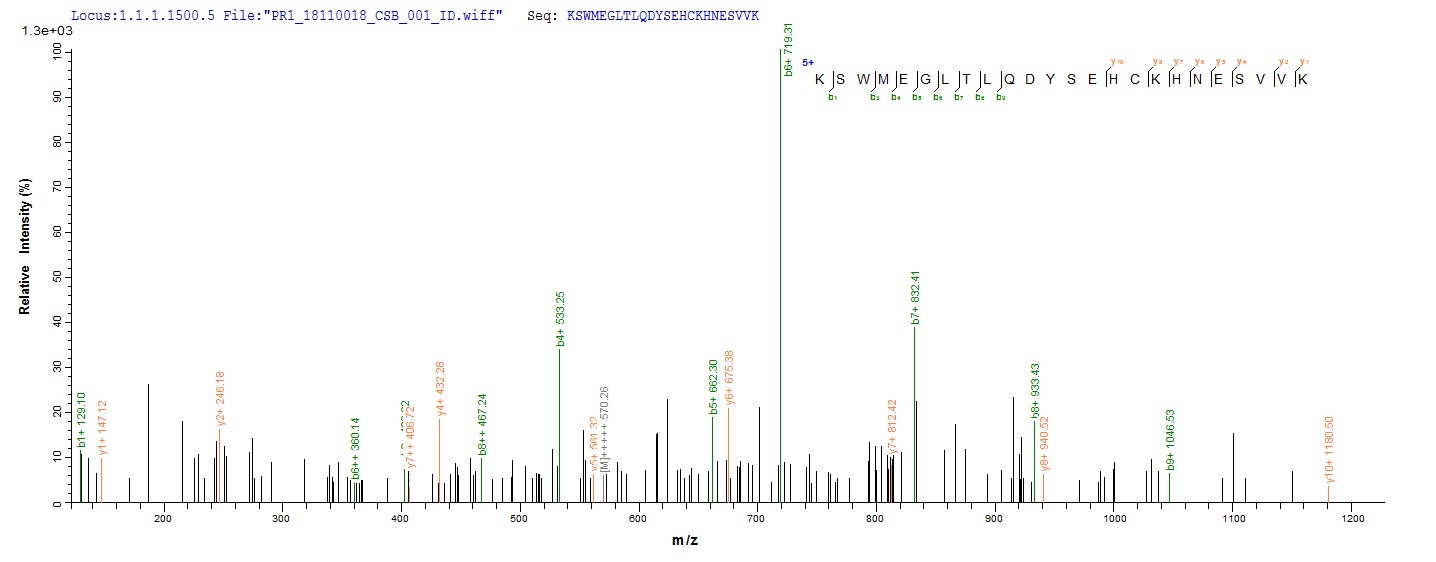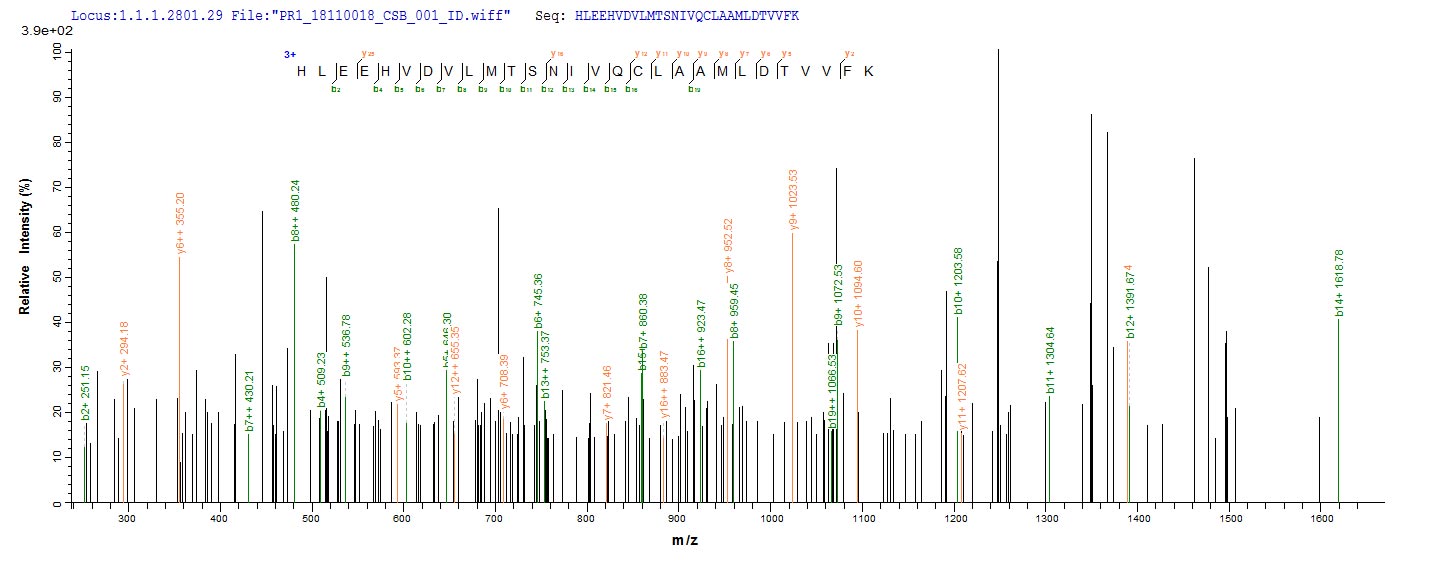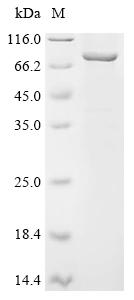The recombinant Human PSMD14 was expressed with the amino acid range of 1-310. The calculated molecular weight for this PSMD14 protein is 79.2 kDa. Expression of this PSMD14 protein is conducted in baculovirus. The N-terminal MBP tag and C-terminal 6xHis tag was fused into the coding gene segment of PSMD14, making it easier to detect and purify the PSMD14 recombinant protein in the later stages of expression and purification.
Research on PSMD14 (26S proteasome non-ATPase regulatory subunit 14) covers multiple areas. Many researchers focus on the precise regulatory mechanisms of PSMD14 in the 26S proteasome, including its position in degradation pathways and interactions with other subunits. Meanwhile, the role of PSMD14 in diseases is a significant area of interest, particularly in cancer and neurodegenerative disorders. These studies contribute to a deeper understanding of the biological functions of PSMD14, offering new directions for the treatment of related diseases.








